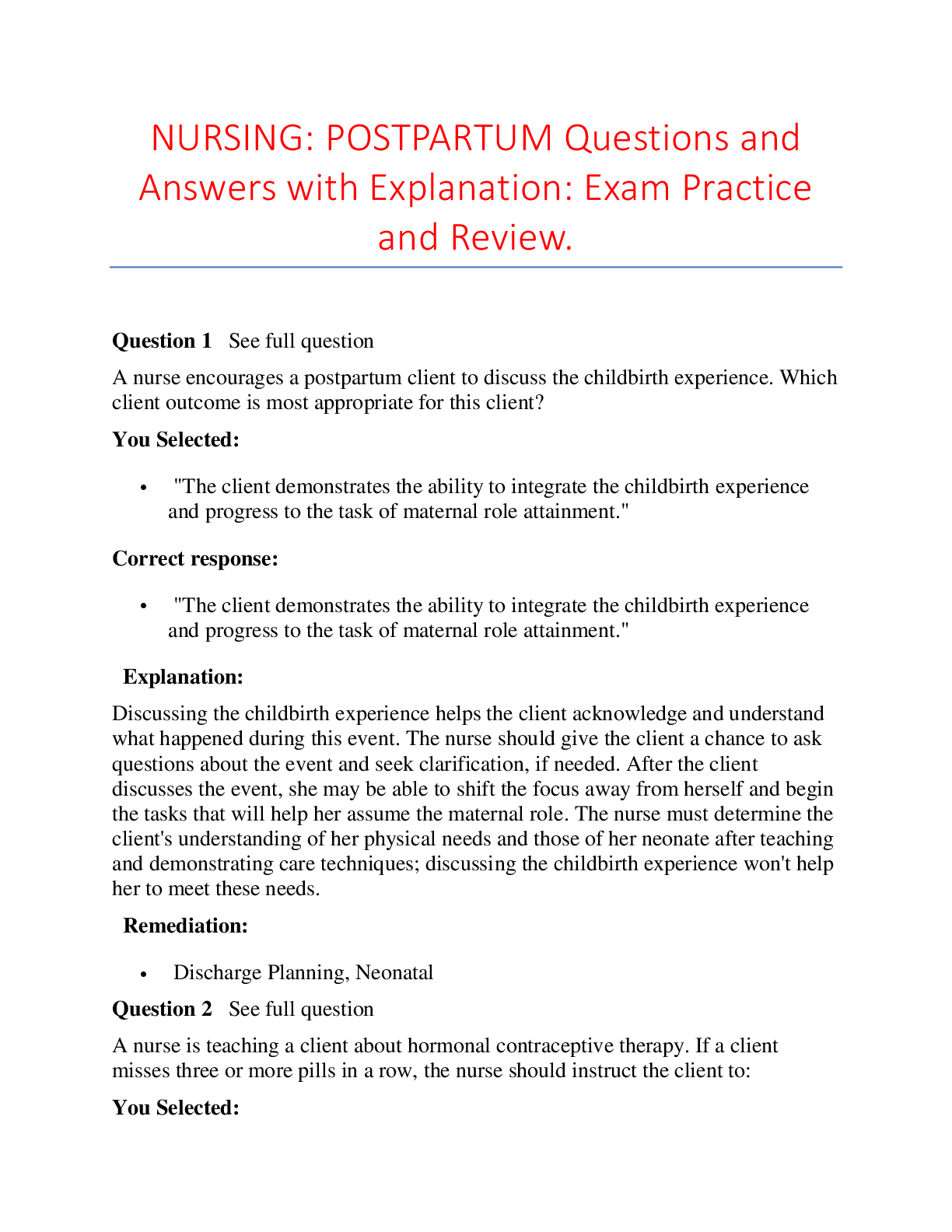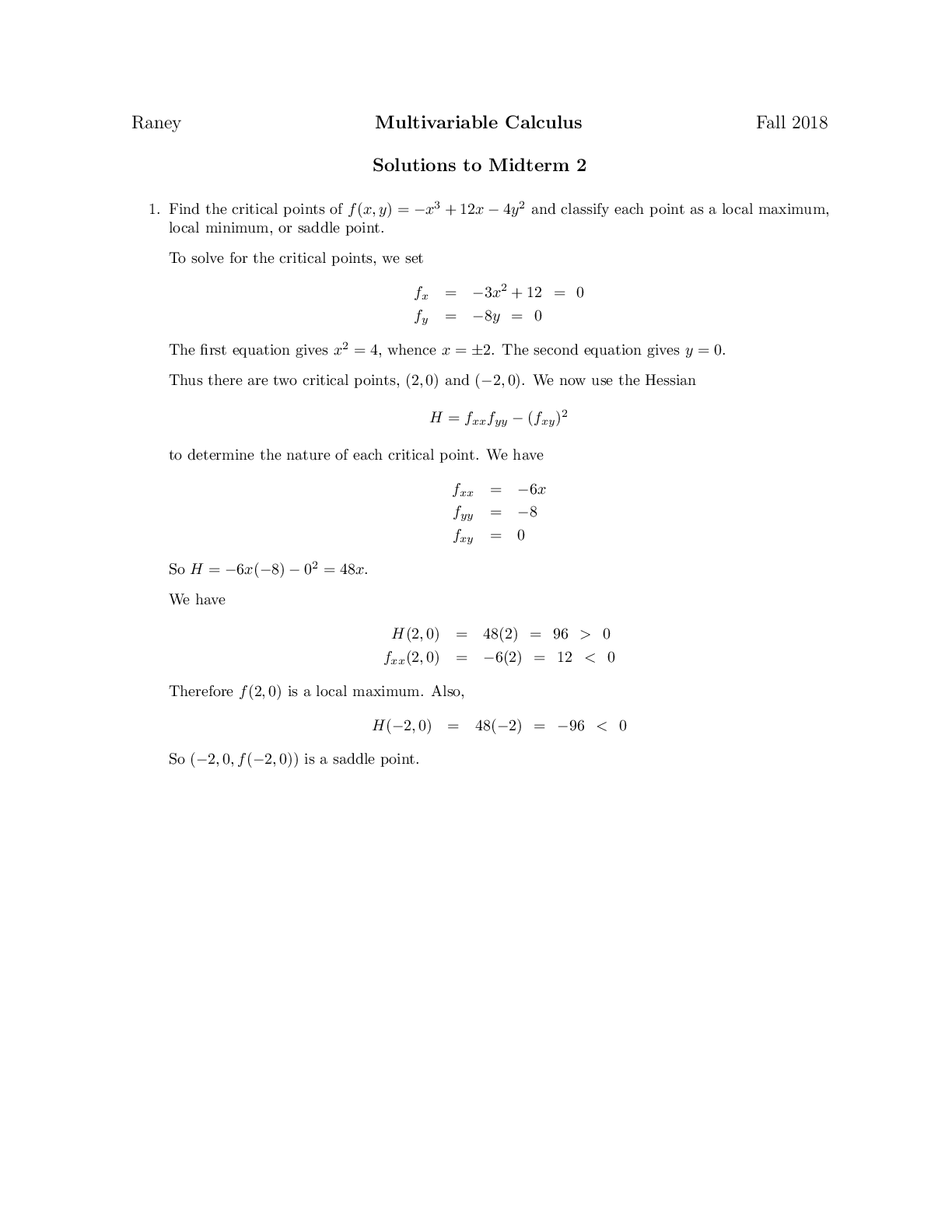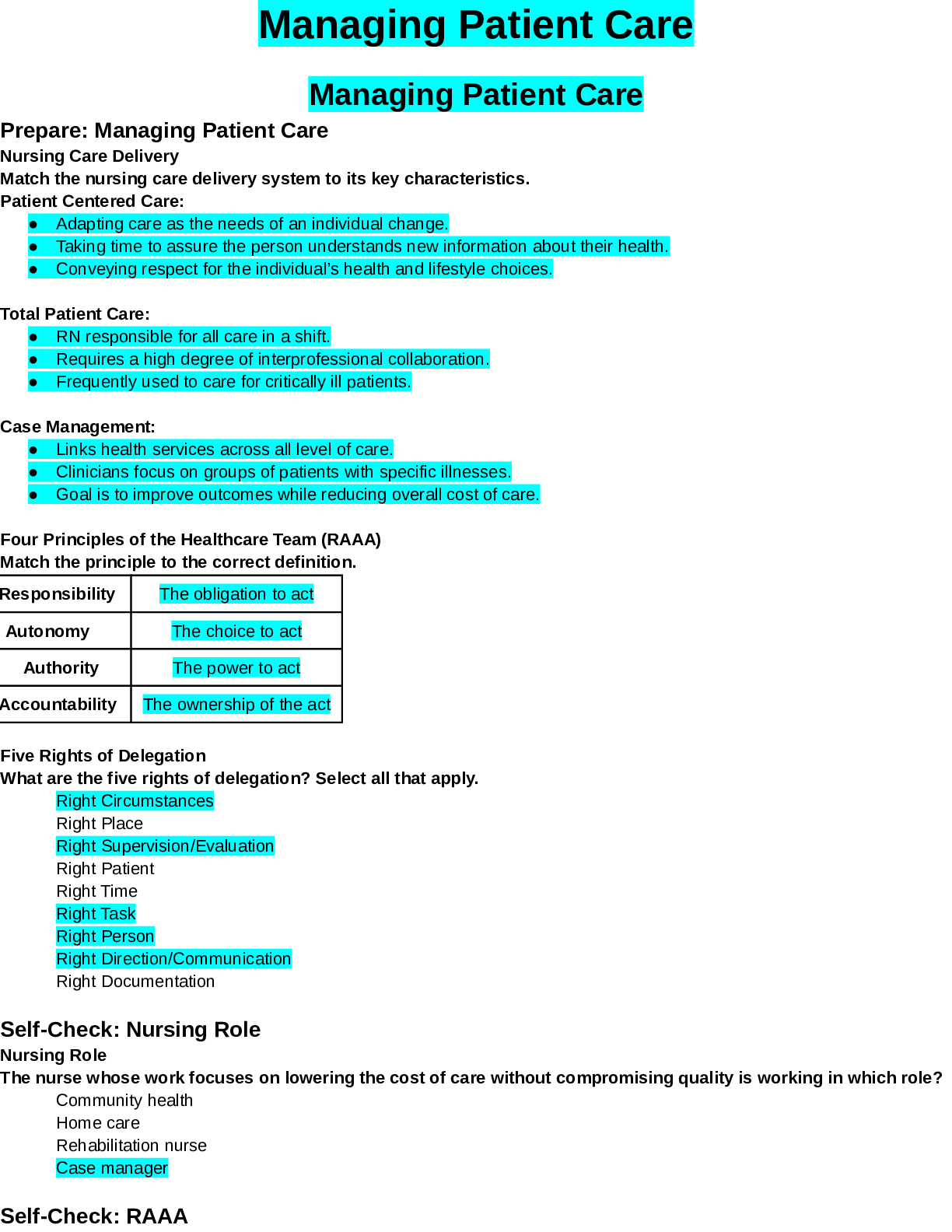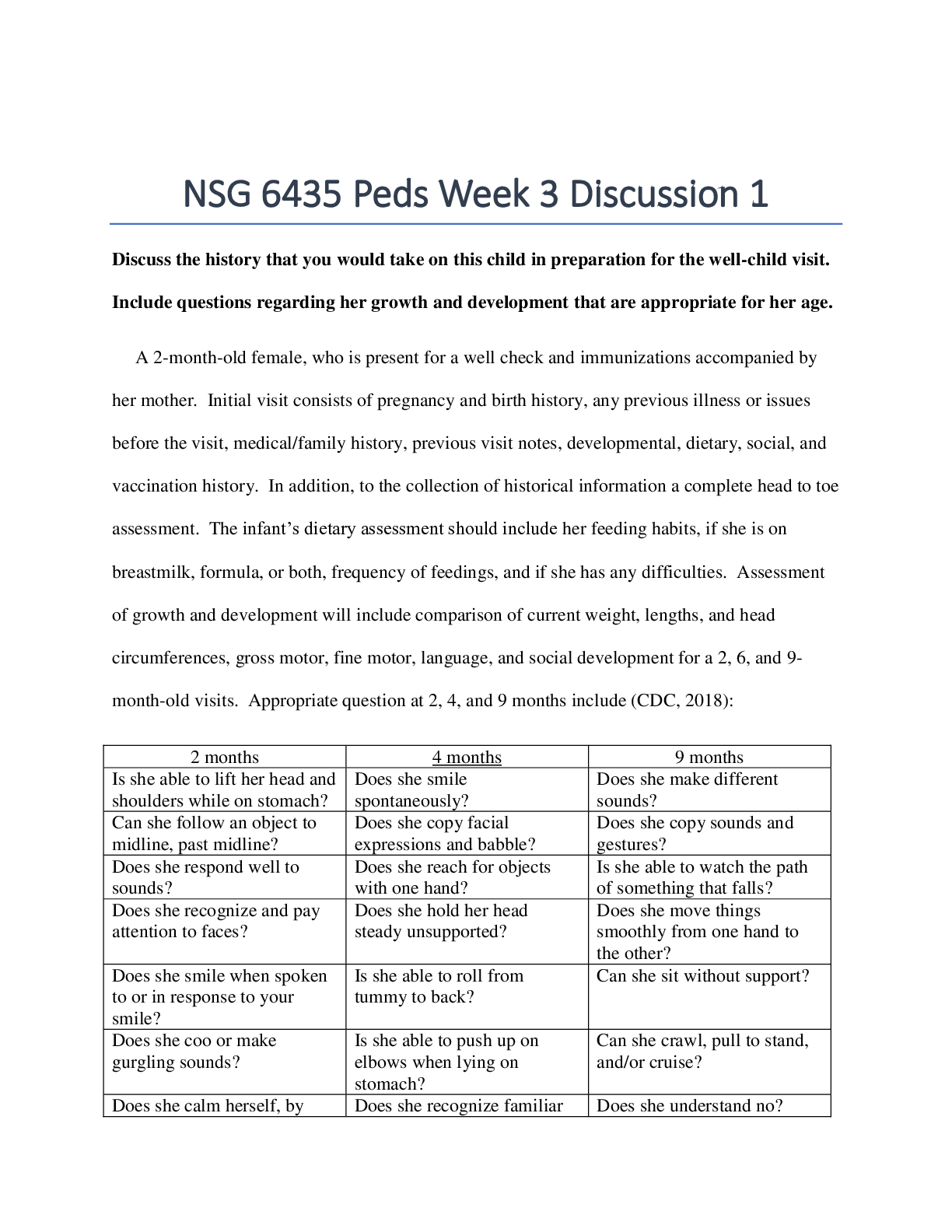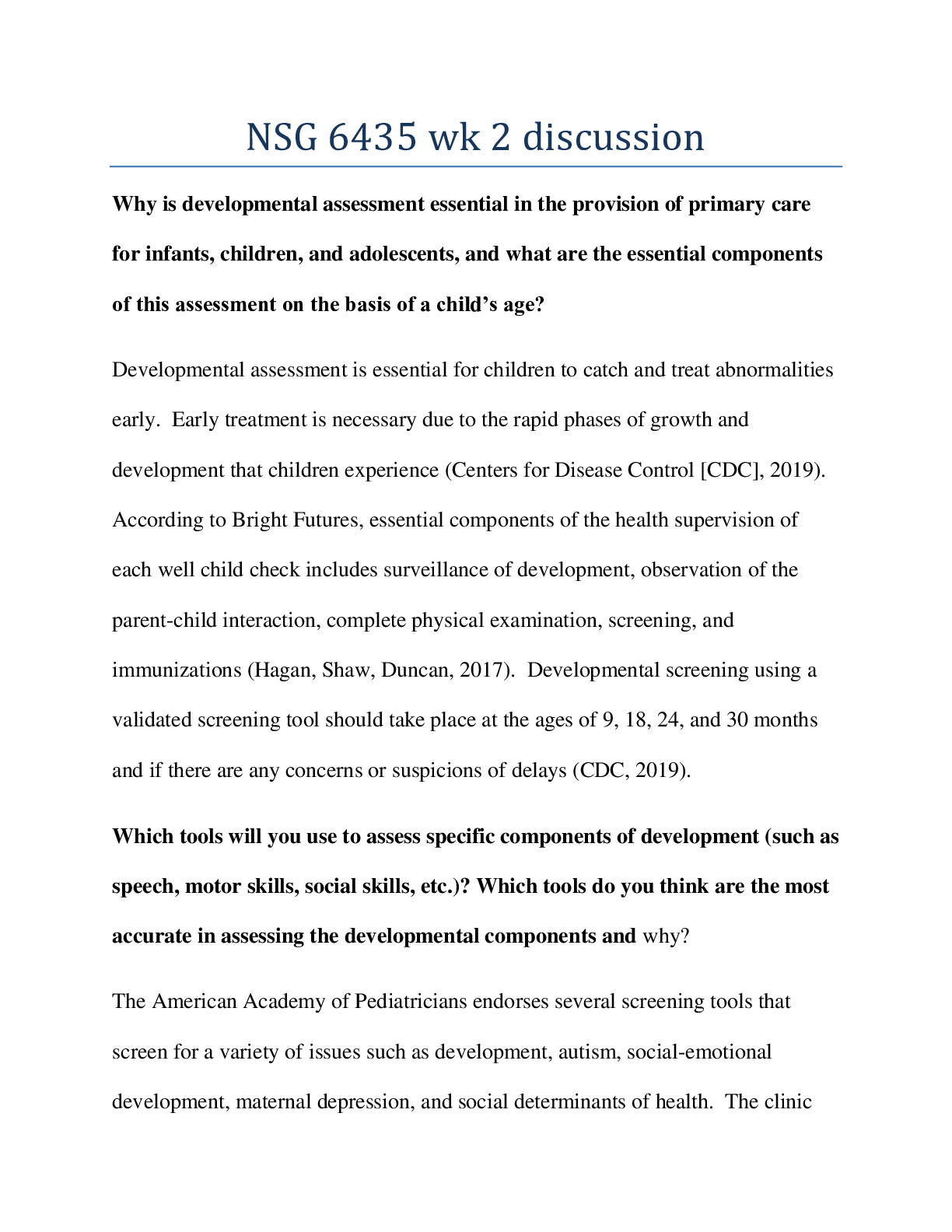Economics > QUESTIONS & ANSWERS > Pennsylvania State University - JPC 5710 Monopoloy Quiz. Scored 100%. All Answers Indicated. (All)
Pennsylvania State University - JPC 5710 Monopoloy Quiz. Scored 100%. All Answers Indicated.
Document Content and Description Below
JPC 5710 Monopoloy Quiz Submitted by Coffaro, Joseph (JPC5710) on 10/30/2019 10:19:22 PM Points Awarded 10.00 Points Missed 0.00 Percentage 100% 1. A monopolist faces a demand curv... e given by: P = 210 – 5Q, where P is the price of the good and Q is the quantity demanded. The marginal cost of production is constant and is equal to $60. There are no fixed costs of production. How much output should the monopolist produce in order to maximize profit? A) 21 units. B) 42 units. C) None of these. D) 27 units. E) 30 units. Feedback: The monopolist should produce the quantity where Marginal Revenue equals Marginal Cost. In this case, that quantity is 15 units. Table for Individual Question Feedback 1.0/1.0 C 2. A monopolist faces a demand curve given by: P = 40 –Q, where P is the price of the good and Q is the quantity demanded. The marginal cost of production is constant and is equal to $2. There are no fixed costs of production. What price should the monopolist charge in order to maximize profit? A) None of these. B) $38. C) $42. D) $21. E) $2. Feedback: The monopolist should produce the quantity where Marginal Revenue equals Marginal Cost, and charge the highest price allowed by the demand curve at that quantity. Table for Individual Question Feedback 1.0/1.0 D 3. A monopolist faces a demand curve given by: P = 40 –Q, where P is the price of the good and Q is the quantity demanded. The marginal cost of production is constant and is equal to $2. There are no fixed costs of production. What is the deadweight loss associated with this monopoly? A) None of these. B) $90.25. C) $180.50. D) $722. E) $361. Feedback: Deadweight loss is equal to (PM-PC)*(QC-QM)/2. Table for Individual Question Feedback 1.0/1.0 C 4. A monopolist faces a demand curve given by: P = 210 – 5Q, where P is the price of the good and Q is the quantity demanded. The marginal cost of production is constant and is equal to $60. There are no fixed costs of production. How much profit will the monopolist make? A) $1125. B) $562.50. C) $2250. D) $281.25. E) None of these. Feedback: Profit equals Q*(P-ATC). Since there are no fixed costs and marginal cost is constant, ATC = MC. Table for Individual Question Feedback 1.0/1.0 A 5. A profit-maximizing monopolist with a positive marginal cost of production will always A) produce on the elastic part of the demand curve. B) earn a positive economic profit. C) produce a higher level of output than a competitive firm. D) produce where demand is unitary elastic. E) produce on the inelastic part of the demand curve. Feedback: If demand is inelastic, the monopolist can increase profit by raising its price. Table for Individual Question Feedback 1.0/1.0 A 6. The supply curve of a monopolist is A) its marginal revenue curve. B) its total revenue curve C) its marginal cost curve which lies above average variable cost. D) its marginal cost curve which lies above average total cost. E) non-existent. Feedback: The profit maximizing quantity depends on both the demand curve and the marginal cost curve. Table for Individual Question Feedback 1.0/1.0 E 7. Suppose a monopolist faces the following demand curve: What is the marginal revenue of the 2nd unit of output? Price Quantity $90 0 $80 1 $70 2 $60 3 $50 4 $40 5 $30 6 $20 7 A) $60 B) $80 C) $10 D) None of these. E) $70 Feedback: Total revenue from selling 1 unit is $80. Total revenue from selling 2 units is $140. The marginal revenue is the additional revenue earned when a firm produces and sells an extra unit of a good. Table for Individual Question Feedback 1.0/1.0 A 8. Suppose the price elasticity of demand for a monopolist is -3. If price equals $30, then marginal revenue equals A) None of these. B) $30 C) $40 D) $10 E) $20 Feedback: MR = P*(1 + 1/price elasticity of demand). Table for Individual Question Feedback 1.0/1.0 E 9. Students typically are charged a lower price for movie tickets than non-students (student discount). We can infer from this that the demand by students for movie tickets is A) less elastic than the demand by non-students for movie tickets. B) perfectly elastic. C) more elastic than the demand by non-students for movie tickets. D) unitary elastic. E) perfectly inelastic. Feedback: Consumers with more elastic demand have more alternative options, and so the firm must charge them a lower price. Table for Individual Question Feedback 1.0/1.0 C 10. Which of the following will lead to a Pareto Efficient outcome? A) A tax on a specific product. B) A price floor. C) The presence of positive externalities. D) A perfectly competitive market. E) A monopoly. Feedback: Definition of Pareto Efficiency Table for Individual Question Feedback 1.0/1.0 D [Show More]
Last updated: 2 years ago
Preview 1 out of 5 pages
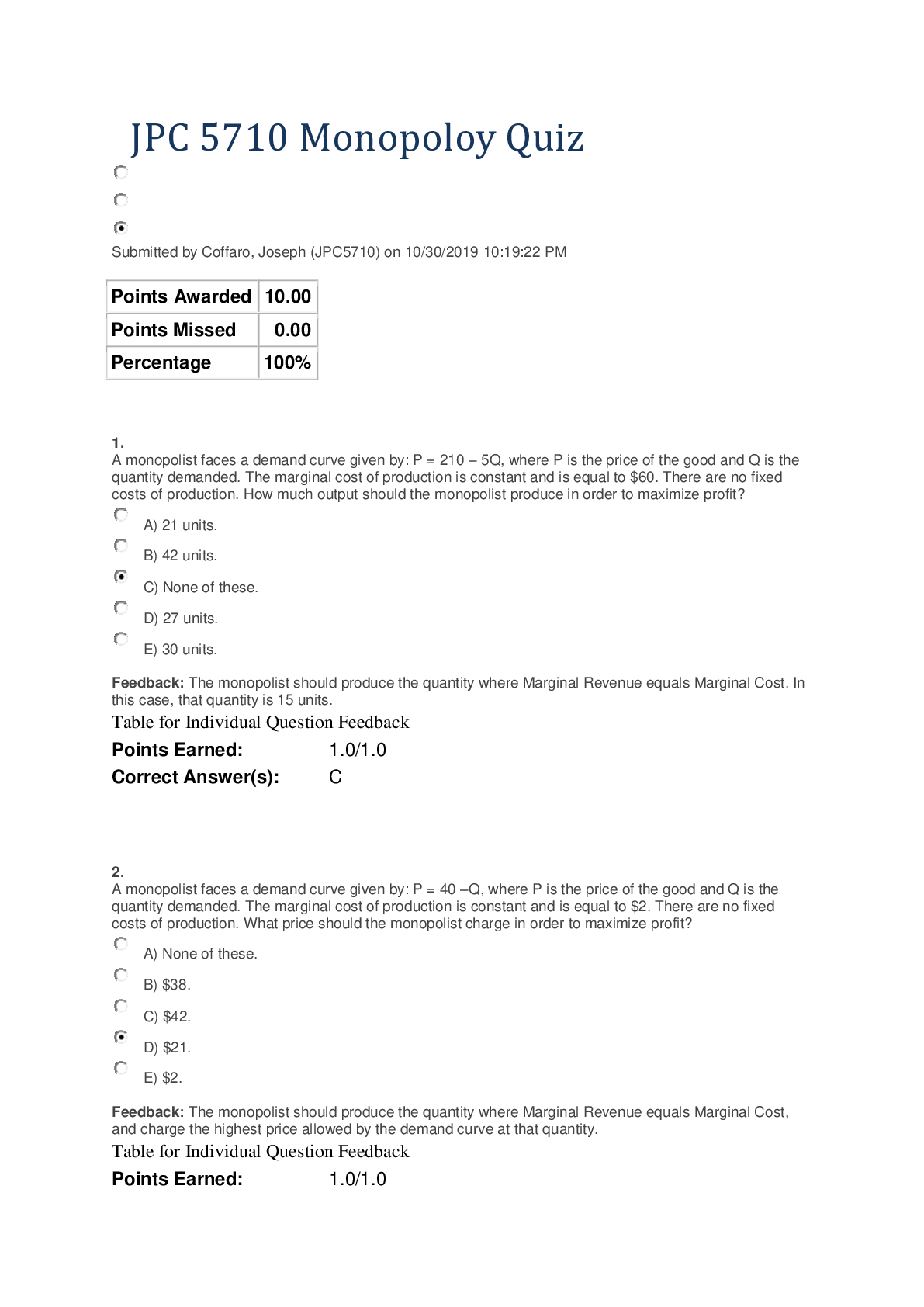
Buy this document to get the full access instantly
Instant Download Access after purchase
Buy NowInstant download
We Accept:

Reviews( 0 )
$11.00
Can't find what you want? Try our AI powered Search
Document information
Connected school, study & course
About the document
Uploaded On
Oct 04, 2020
Number of pages
5
Written in
Additional information
This document has been written for:
Uploaded
Oct 04, 2020
Downloads
0
Views
94

